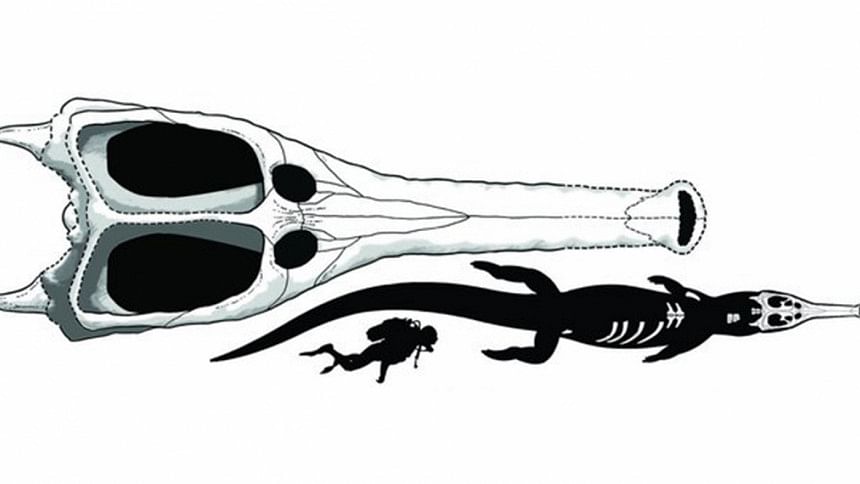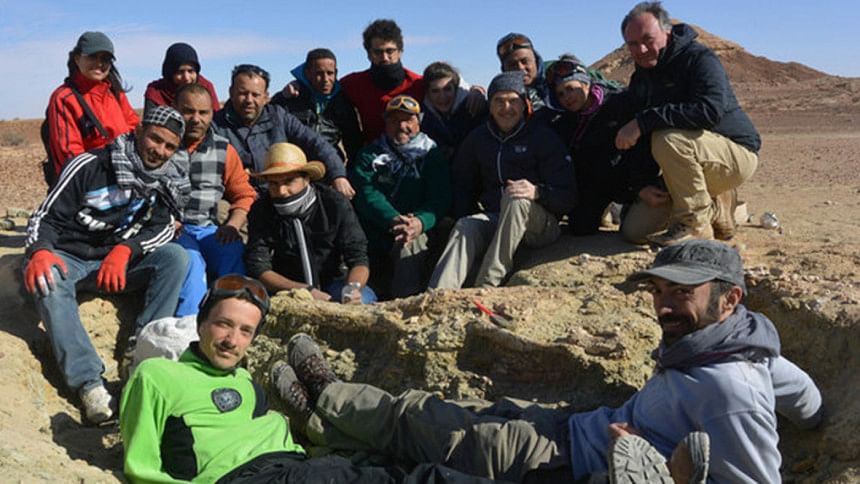Scientists discover terrifying prehistoric crocodile

Scientists have discovered an extraordinary and gigantic crocodile that terrorized the seas some 130 million years ago, reports The Huffington Post.
Paleontologist Dr Federico Fanti and his colleagues recently unearthed a skull and other fossilized bones in southern Tunisia that belong to the prehistoric beast Machimosaurus rex. Their research, supported by the National Geographic Society Committee for Research and Exploration, was published in the journal Cretaceous Research on Monday.
"We were very happy to find out that several skeletons of this new species were fossilized in very good condition," Fanti, a researcher at the University of Bologna in Italy, told The Huffington Post.
The fossils indicate that Machimosaurus rex belonged to a group of crocodiles that inhabited the sea and coastal areas around the end of the Jurassic Period, but the species is not directly related to modern-day crocodiles, Fanti said.
It was also a whole lot bigger: The creature weighed three tons and likely grew to more than 30 feet long, National Geographic reported. Scientists believe M rex had a powerful bite and short, stocky teeth. It likely ate turtles and fish, and may have scavenged for food as well.

"It would likely have been something of an ambush predator, hanging around in shallow water hunting turtles and fishes and maybe waiting for some land animals to come a little too close to the shore," Dr Stephen Brusatte, a paleontologist at the University of Edinburgh in Scotland who was not involved in the new research, told National Geographic. "This is a neat new discovery from a part of the world that hasn’t been well-explored for fossils."
The remains of other species that belonged to the extinct Machimosaurus genus of crocodiles have been discovered in Europe and North America. Analyses of those fossils reveal that the marine crocodiles were affected by a mass extinction near the end of the Jurassic Period.
However, the newly discovered remains of M rex show that the species was still alive at that time, and may have continued to thrive for another roughly 25 million years after the supposed extinction event in other parts of the world, Fanti said to The Huffington Post.
"Therefore, this discovery sheds new light on the hypothesized mass extinction event at the end of the Jurassic -- a biological crisis currently much less understood than the famous extinction at the end of the Cretaceous that wiped out the dinosaurs," he added.

 For all latest news, follow The Daily Star's Google News channel.
For all latest news, follow The Daily Star's Google News channel. 








Comments